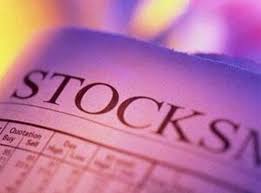Snow Storm Stella Hit the Stock Market Harder Than Wall Street Expected

Even Wall Street’s computers still have a problem with a messy commute, apparently. Although it’s still less than human traders did decades ago.
As of 2 p.m., trading volume on New York Stock Exchange was down 30%, compared to average trading volumes over the past month. Stock trading, overall, on all exchanges including the Nasdaq Stock Market and electronic trading venues like BATS, was down slightly more at 33%. And that drop is despite the fact that the blizzard Stella turned out to be less of a super storm than expected.
Over the past decade or so, more and more trading on Wall Street is being done electronically, moving away from human traders meeting in the pits of the New York Stock Exchange and elsewhere to trade stocks. High-frequency trading—when computers, directed by algorithms, make stock trades in micro-seconds (often with other computers)—now makes up nearly 70% of all stock trading. That’s led to some stock market disruptions, like the so-called Flash Crash of 2010. It’s also allowed critics like Michael Lewis to claim that the speed of Wall Street’s professional traders makes the market unfair for regular investors these days.
But one clear advantage of computers set mostly on autodrive trading stocks using artificial intelligence should be less disruption in trading on snow days. And snow storms do seem to disrupt trading less than they used to. Indeed, when the Great Blizzard of 1888 dumped 21 inches of snow on New York City, Wall Street came to an almost complete stop. Trading on the NYSE fell by 99%. Snow storms not nearly as bad would regularly reduce trading on Wall Street for more than 100 years after that. As recently as January 1996, when New York City was again blanketed in more than 20 inches, stock volumes on the NYSE fell by 69%.
But while snow’s impact on the market has since declined, snow storm Stella still slowed trading on Wall Street more than many predicted: “Volume probably will be light,” Sam Stovall, chief investment strategist at CFRA, told CNBC on Monday. “But it shouldn’t be a big deal. So much trading is done globally and electronically. People will trade from home.”
But that didn’t happen, perhaps because humans are still behind more trading than many think, even if the actual trading is done by computers.
Another sign that human traders still drive Wall Street: Studies continue to show that the market is more likely to be up on sunny days than on cloudy ones, something that computers likely don’t notice. Case in point: The Dow Jones industrial average fell 44 points on Tuesday.

